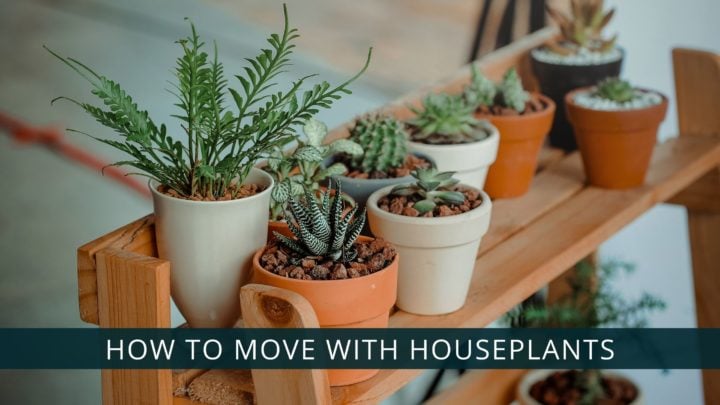We all have our favorite houseplants. Sometimes, we have lots of favorites and respect each one as a living, breathing organism that requires our love and care. Thus, if the time comes to move, we are always concerned about them making the trip without injury. It’s one thing to move your houseplants locally. But what about moving them to another state? If you want to ensure that they make the trip to your new home safely and in one piece, it’s going to require considerably more prep work than when moving locally.
Initial Considerations when moving with Houseplants to another State
Each state has its own set of certification requirements and regulations when it comes to moving houseplants. Thus, it’s important that you learn about these in order to be compliant. Learning the practices for transporting them is just as crucial as preparing them for the trip. You’re tasked with finding out if you can legally take them with you as well as whether or not you should. This depends on two factors – the law and the growing conditions of the state you’re moving to. This varies as per the state regulations. It is best to check with the moving company as they are abreast with the latest laws and regulations in regard to moving belongings.
Be aware of Your new Home State’s Guidelines
Every state is different concerning the laws and regulations that they have regarding the importation of plants. For example, certain states will only allow you to bring plants that have been kept in pots indoors and/or are potted in a certain kind of soil. The USDA (United States Department of Agriculture) along with other Federal agencies has certain rules for shipping plants. This is how they minimize the spread of harmful diseases and insects that some plants are known to carry. So be sure that you check the laws and regulations of your new state before embarking on your trip there.
Learn about the Growing Conditions
When it comes to moving your houseplants, there’s more to be concerned with than whether or not you can transport them with you. Keep in mind that the plants that were thriving in your environment may not do the same in your new location. Although your indoor plants are probably hardy, very dry or very moist conditions can have an adverse effect on them. Consider the climate and the frequency of rainfall as well as the amount of available sunlight at your new location.
Packing Your Plants
Due to the lack of airflow, sunlight, and water, Eckert’s Moving and Storage will not transport houseplants to your new home. There might be damage and we certainly want the best for your plants. However, you do have other options for getting them there including transporting them in your vehicles. Here is what you’ll need when preparing your houseplants for shipping:
- bubble wrap
- flea collars
- newspaper or wrapping paper
- paper towels for any cuttings
- plastic bags and ties
- replace clay and terra cotta pots with plastic pots
- small, sturdy moving boxes for each pot
- sterilized potting soil
Start by re-potting every plant in a plastic pot with fresh, sterilized potting soil about 3 weeks prior to your move. Place a flea collar around the base of each pot to deter pests. Water every plant 48 to 72 hours before leaving. When packing the plants, use the plastic bags and ties to keep the potting soil contained. Place plants inside box and prevent them from moving by using crumpled up newspaper to secure them. Poke a few holes in the boxes to allow air flow.
Moving tall plants
For tall plants, it is best to pack in some sphagnum moss on the top of the potting mix. Then wrap it up in plastic and tie it all with tape or string. This will ensure when you place it on the side, there is no loss or mess created in your vehicle. If you are travelling long distance with plants, it is important that the inside of the vehicle should not be too hot or too cold. It is bets to leave the car windows slightly open, so that there is proper ventilation and make sure you water them accordingly.
If some plants, like bushes or shrubs are too big to move, take a cutting wrapped in a damp paper towel so you can replant it when you get to your new home.
Additionally, if you need any assistance with moving the rest of your belongings, we would be happy to be of assistance. To learn more, send Eckert’s Moving and Storage a message at www.eckertsmoving.com or call us at (888) 274-7230 when convenient.

